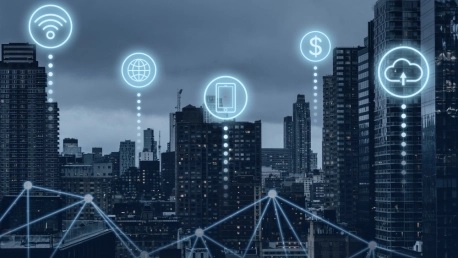The UN estimates that, by 2050, 68% of the world’s population will live in urban areas.
Governments and organizations are increasingly looking to connected technologies to help them secure better social, financial, and environmental conditions for these rapidly growing communities.
The concept of a ‘smart city’ has existed for decades. In 1994, Amsterdam opened the gates of De Digital Stad (DDS)—a fully digital city—to promote internet usage. Just over a decade later, Cisco invested $25 million in its Connected Urban Development (CUD) program, an investigation into the effectiveness of connected ICT solutions in reducing CO2 emissions in Amsterdam, Seoul, and San Francisco.
Today, these efforts expand far beyond a few flagship projects. Explosions in both data and innovation have created thousands of new smart cities around the world. Smartphones, Internet of Things (IoT), advances in 5G, and other connected technologies are making it increasingly feasible to inject huge volumes of actionable data into city operations. Read this article to learn how connected technology is transforming urban life worldwide—and shaping the cities of tomorrow.
Easier Daily Commutes
Delays, crowded public transport, traffic jams, and the endless search for parking all perpetuate the idea that inner-city commuting is an arduous task.
But Mobility-as-a-Service (MaaS), accessed through apps like Moovit, is already making this aspect of life easier. It allows commuters to compare travel options, plan and book their optimum route, and check real-time traffic and delay updates.
As they develop, MaaS platforms might change the entire way we conceptualize transportation. In an ideal scenario, people will begin to see it as a service like any other, from which they can choose the perfect solution for each particular journey. IoT sensors will help distribute vehicles and passengers more evenly, and commuters will travel seamlessly, using any mode of transport they choose, even in the morning rush.
In this future, a combination of MaaS, shared mobility, autonomous vehicles, and electrification will also combine to deliver low-impact travel—a more sustainable, eco-friendly model that will benefit residents, the city itself, and the planet as a whole.
Better Use of Resources
Leaders of smart cities will soon be able to shift their approach to resource management from reactive to proactive—and eventually to predictive.
Today, most cities collect waste on predetermined days, regardless of whether the bins are half-empty or full to bursting. New neighborhoods are built with excessive or insufficient parking. Water is squandered and green spaces wilt because sprinkler systems are set to fixed schedules that do not account for rain.
IoT technologies could reduce this inefficiency. Sensors can tell garbage collectors when a certain waste threshold is met. Cities will one day be able to optimize entire waste management systems with machine learning (ML), to identify the most efficient strategy for keeping each bin empty for the maximum amount of time.
‘Smart parking’ companies like Meterfeeder and Streetline allow drivers in to reserve particular spots, and even pay for their parking in advance. Over time, IoT and ML will widen this scope, and help distribute vehicles across the whole city using measures like dynamic price adjustment.
Irrigation systems—not to mention plants and wildlife—will reap great benefits from IoT. Water can be efficiently deployed in accordance with local weather reports, as well as the moistness of the soil and the area’s water supply. This will be game-changing for areas affected by water scarcity.
Crime Reductions and Increased Safety
A connected city helps citizens feel safer. Responsive IoT technologies canl reduce security blind spots, providing police with access to a shop’s CCTV almost as soon as a theft occurs—and cities like New York, Chicago, Los Angeles, and New Orleans are already experimenting with predictive policing programs.
If implemented, city data—like weather reports and crime statistics—will undergo AI-enhanced processing and modeling, and provide forecasts about where and when crimes are most likely to occur. These initiatives are still in their infancy, but there is strong evidence that they work: Chicago’s algorithm has helped reduce shootings in the city’s 7th District by 39%.
How these schemes progress will depend on factors like cybersecurity and dark data concerns. But security will strengthen as IoT technologies improve over time, and edge computing is a strong candidate for solving the data issue and improving the efficiency of algorithms.
Deeper Citizen Engagement
Smart cities can provide a more cohesive social environment for city occupants, perhaps even doubling citizens’ feeling of connectedness with their community. They are also allowing local governments to take a more citizen-first approach to delivering services.
For example, San Francisco has implemented Civic Bridge, a program that unites public and private sector talent in an effort to boost two-way communications between citizens and municipal leaders. Data analysts and designers volunteer their time to identify and address pain points like public toilets, street cleaning, and improving service access for LGBTQ communities. Similarly, residents of Boston can use the BOS:311 platform to report issues like broken traffic lights and potholes.
In the social sphere, smart technologies can also help neighbors connect more easily and deeply with each other. Companies like Soofa are developing solutions like IoT-driven community notice boards, which allow citizens to share information with their fellow residents.
Conclusion
Each year, IMD Business School ranks an index of notable smart cities, a list which expands with every new report. Out of 109 top-level candidates, Singapore, Helsinki, and Zurich led in 2020—but these represent the very tip of the iceberg
For many years, smart cities were discussed as an almost utopian ideal. Thanks to big data and rapid technological advancement, they are now an imminent, tangible reality. At the current pace of evolution—in areas like IoT, analytics, and networking—wide-scale, connected technology will soon spread across urban districts everywhere, and change life as we know it.









